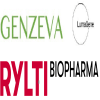At the beginning of the year, there was a great deal of anticipation about when the first biosimilar would be approved in the U.S.
And then it happened.
On March 6, the FDA has approved Novartis/Sandoz's Zarxio (filgrastim-sndz), a biosimilar of Amgen's Neupogen and used to prevent infection and improve immune function in patients undergoing cancer treatment. And as of Thursday, September 3, Zarxio officially hit the U.S. market at a 15% discount to Neupogen.

Suddenly, a set of concerns that had seemed largely theoretical became concrete, temporal problems that required practical solutions. Between new FDA guidance, patent litigation, and concerns about naming conventions and pricing, there are still many unanswered questions about biosimilars. However, one thing is clear: Biosimilars are now part of the healthcare landscape in the U.S.—and it is only a matter of time before large-scale market penetration occurs.
In order to gain clarification around several key issues concerning biosimilars, we spoke with Dr. Bert Liang, Chair of the Biosimilars Council and CEO of Pfenex Inc., a San Diego-based biosimilar development company.
1) Last month, you responded to the decision from the Federal Circuit Court of Appeals that recognized the ‘patent dance’ as optional by applauding the decision. Can you explain your reaction?
Bert Liang: A mechanism was created under the Biologics Price Competition and Innovation Act (BPCIA) by which the brand manufacturer and the company developing the biosimilar can evaluate whether there is an IP violation. This involves an exchange of patents—and this is a fairly complex process.
Fortunately, the first appellate court ruled that the BPCIA does not require a biosimilar applicant to provide a complete copy of its application to the reference company upon filing. Therefore, the ‘patent dance’ is optional. This allows a biosimilar manufacturer to pursue the most expeditious avenue for resolving patent disputes.
2) When would it be beneficial for a biosimilar company to provide a complete copy of its biosimilar application to the reference manufacturer upon filing?
Liang: In cases in which a company wanted to start the patent litigation process early or if the company wanted to see which patients might be the basis for a suit.
3) You have indicated that the proposed biosimilar naming convention put forth by the FDA in which originator products and biosimilars share the same core name and have different suffixes. Please tell us why you disagree with that.
Liang: Different International Nonproprietary Names (INNs) generates confusion between physicians and pharmacists in prescribing, and suggests biosimilars are different products, rather than drugs that have been determined by FDA to have no clinically meaningful differences.
Indeed, in FDA’s most recent communication around naming, the agency has noted as a goal to “avoid inaccurate perceptions of safety and effectiveness of biological products based on their licensure pathway”; utilizing the INN, as has been done for years in other, more mature biosimilar market geographies such as the EU, Australia, and Japan, has been shown to be a safe and effective system to create patient access, ensure pharmacovigilance, and decrease the cost burden to the healthcare system. This ultimately offers greater patient access, both to biosimilars and other innovative treatments.
4) What type of approach to naming would work in your opinion?
Liang: Biosimilars and biologics should have the same International Nonproprietary Name (INN). This practice has been used and proven in a number of geographies, and has been shown to create a robust marketplace for biosimilars, ensuring greater patient access.
5) How do you see the public hearing hosted by the FDA playing out? Who are your allies in this issue?
Liang: We have been working extensively within the Biosimilars Council to support and actively advocate the INN naming convention to stakeholders, including the FDA, which has been used successfully in the past where biosimilars are a more mature industry.
The Biosimilars Council is part of the Generic Pharmaceutical Association, and consists of 12 industry manufacturers who have an active interest in biosimilars. In addition, a number of other organizations have commented on the recent FDA naming guidance/rule, including the National Council for Prescription Drug Programs (NCPDP) and the Academy of Managed Care Pharmacy. Each of these organizations has been highly in favor of using the INN for biosimilar naming.
6) Can the U.S. look to Europe as a model for the evolving role of biosimilars?
Liang: Europe is currently the most advanced biosimilar market. There is 30% to 40% penetration in the EU5 countries. (Note: The EU5 includes France, Germany, Italy, Spain and the U.K.) In the U.K., 70% of available filgrastim is biosimilar. A particularly good model for the U.S. is Germany, mainly because of the fact that Germany also has a decentralized reimbursement marketplace.
Biosimilars were introduced in Europe in 2005. Now that Europe has a decade of solid biosimilar experience, the U.S. can learn a lot from these markets.











